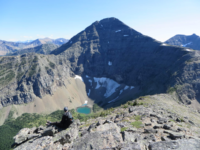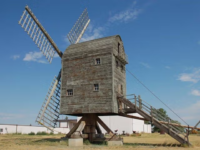Releasing grizzly cubs back into wild not most humane solution
By Lethbridge Herald Opinon on June 4, 2020.
Gordon Stenhouse
Alberta Environment and Parks
I write today to respond to a recent n open letter regarding three grizzly bear cubs that government Fish and Wildlife officers rescued – and to clear up misinformation contained in the letter.
These grizzly bear cubs are four months old and would not have survived in the wild at this stage of their life without human intervention. The bears were safely transported to the Calgary Zoo, where they are receiving appropriate care and will stay temporarily while zoo officials make arrangements to find them a more permanent home.
Due to safety concerns and a lack of post release monitoring, grizzly bears reared in captivity are not released back into the wild in Alberta. Grizzly bear cubs spend up to three seasons with their mother and during this time cubs learn about their environment including what food is, where to find it and what the risks to their safety are. These risks can include other bears and humans. Cubs raised in captivity during this critical learning period do not receive this critical information which is important for their survival.
Science does not show that releasing grizzly bear cubs back into the wild is the most humane solution. Current research does not provide adequate evidence that captive rearing and release of grizzly bear cubs is successful. Recent Alberta research shows that even adult grizzly bears moved into new or unfamiliar habitats show very different movement rates and habitat selection patterns than resident bears in the same landscape. These differences increase the likelihood of encountering humans and getting into conflict situations. Information is also lacking about the safety risks it can place on facility operators and volunteers, the public and the bears themselves.
The grizzly bear cub rearing project at Northern Lights Wildlife Shelter in B.C. is a pilot project at one facility in the province. Currently, there is little supporting evidence that the pilot rearing project for orphaned grizzly bears has resulted in survival past the first denning period. B.C.’s facility has limited space – and priority for space is given to B.C. wildlife. Animals from outside the province are avoided, because they can introduce new parasites and infectious diseases, which puts other animals at risk. To my knowledge, no other jurisdiction in North America allows captive rearing and release of grizzly bears (Montana is currently caring for three cubs that they stated publicly will not be released back to the wild).
I have the utmost confidence that the Calgary Zoo will find a suitable home for the three grizzly cubs. Worldwide, over 700 million people visit zoos each year, where they learn about wildlife in a context that facilitates the development of care toward nature, conservation behaviours and long-term connections between humans and animals. In this case I would also hope that visitors will learn more about the role of large carnivores in the ecosystems we share with them.
Alberta is not without a grizzly recovery plan and the plan developed in 2013 is still operational and guiding recovery actions. These actions continue to focus on reducing human-caused mortality rates, access management planning and gathering new data on population size in the seven provincial bear management units. We have seen important (and impressive) population increases in some areas of Alberta. For example in BMA 3 (Yellowhead) showed a doubling of the grizzly bear population over a 10-year period between 2004 and 2014. By the end of 2020, for the first time in our province’s history, we will have science-based population estimates for all provincial bear management units. No other jurisdiction in North America has undertaken, or achieved, grizzly bear population inventory work at this scale.
Environment and Parks is creating an updated plan with the best available data to explain recovery achievements to date and to guide the management of this important species in Alberta using the science that has been underway in our province over the past 23 years.
Gordon Stenhouse, Alberta Environment and Parks, seconded to: fRI Research Grizzly Bear Program Leader and Research Scientist.
13-12




